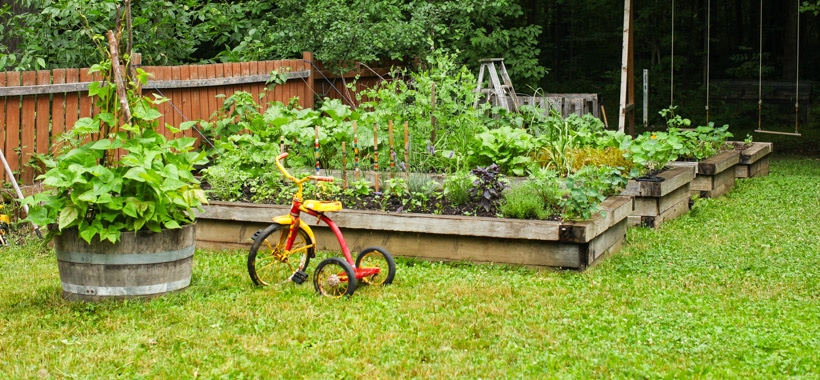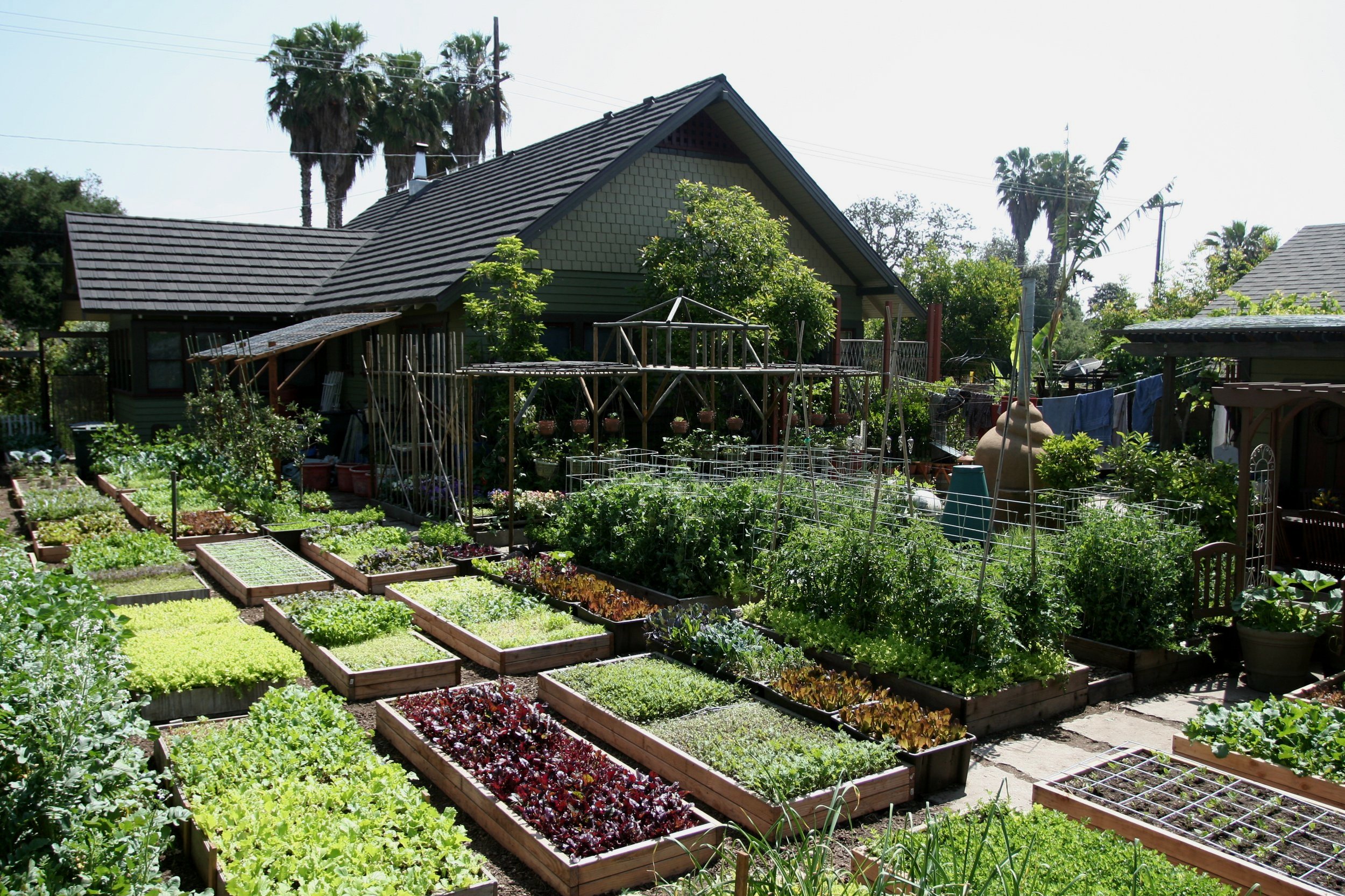How to Go Green with Homestead Gardening
How to Go Green with Homestead Gardening
Blog Article
Uncover the Keys to Producing a Stunning and Effective Horticulture Area
Creating a stunning and effective gardening area is not simply a matter of planting flowers and vegetables; it requires a tactical method that encompasses different important aspects. From choosing the right place based on sunlight and soil kind to attentively making your format and picking ideal plants, each choice plays an essential function in the success of your garden.
Choosing the Right Area
Picking the ideal area for your garden is critical to its success and overall visual appeal. The very first step in this procedure involves analyzing sunlight exposure, as the majority of plants require at the very least 6 hours of direct sunshine daily (Homestead Gardening). A south-facing yard generally gets the most light, while shaded locations can hamper development and flowering
Furthermore, take into consideration soil high quality and water drainage. Well-draining soil is vital to protect against waterlogged roots, which can cause plant conditions. Conducting a soil test can offer beneficial details regarding pH levels and nutrition material, allowing you to change the dirt accordingly.
Furthermore, distance to water sources is one more aspect to evaluate - Homestead Gardening. Having very easy accessibility to a tube or watering system can streamline the watering procedure and motivate regular plant care. Wind security is likewise vital; placing your yard near frameworks, such as wall surfaces or fences, can shield it from severe winds that may damage fragile plants
Last but not least, consider ease of access for maintenance and harvesting. A well-placed yard enables practical access, guaranteeing that you can easily tend to your plants without triggering undue tension or disturbance. Thoughtful area choice lays the foundation for a thriving yard.
Choosing Plants Carefully
When choosing plants for your yard, it's necessary to think about elements such as environment, dirt conditions, and individual preferences to ensure a effective and harmonious space. A thorough understanding of your neighborhood climate will certainly assist you in selecting plants that grow in your particular environment. Choosing drought-resistant varieties is beneficial in arid regions, while moisture-loving varieties might be much more appropriate for locations with high rainfall.
Dirt conditions are just as important; carrying out a dirt test can expose pH degrees and nutrient web content, permitting you to pick plants that will certainly grow. Native plants are usually an exceptional selection, as they are generally well-adapted to neighborhood dirt types and require less upkeep.
In addition, consider your gardening goals. Are you going for an ornamental display, a vegetable yard, or probably a combination of both? This will influence your choices dramatically. Reflect on your personal preferences-- choosing plants that reverberate with your visual tastes will improve your pleasure and commitment to preserving your garden. By thoroughly examining these aspects, you can produce a diverse and flourishing plant selection that elevates your gardening experience.
Creating Your Yard Format
With a thoughtfully picked plant option in hand, the next step is to produce a yard design that maximizes both beauty and capability. Begin by examining the available room, taking into consideration elements such as wind, sunshine, and shade patterns. A well-planned format must incorporate numerous zones, consisting of areas for growing, pathways, and perhaps seating.
Start with bigger plants or centerpieces, such as trees or high perennials, placed tactically to create visual interest. Layer smaller plants ahead to enhance depth and appearance. Think about the development routines of your chosen plants; taller ranges need to be positioned at the back or facility of beds, while much shorter ones can line the edges.
Including paths not just promotes accessibility for upkeep however additionally invites expedition. Usage products that complement the garden's general aesthetic, whether stone, gravel, or wood chips.
Furthermore, think of seasonal changes and exactly how your design will certainly look throughout the year. Including evergreens along with seasonal blossoms can ensure year-round charm. Eventually, a properly designed yard design balances the all-natural appeal of plants with sensible factors to consider, causing a room that is both welcoming and effective.
Enhancing Dirt Health

To boost soil wellness, begin by carrying out a dirt test to examine pH degrees, nutrient material, and dirt texture. This will notify your modifications. Incorporate natural issue such as compost, well-rotted manure, or leaf mold and mildew to boost soil structure, water retention, and microbial task. In addition, practicing crop rotation can stop vitamins and mineral depletion and decrease bug and condition pressures.
Mulching is another efficient technique; it not only saves wetness however likewise reduces weeds and slowly enhances the soil as it damages down. Staying clear of too much husbandry is crucial, as it can disrupt soil framework and injury beneficial microorganisms. Rather, take on no-till or marginal husbandry techniques to keep dirt honesty.

Preserving Your Garden Efficiently
A well-kept garden provides pride and productivity, requiring regular focus to make certain that plants prosper and the landscape stays inviting. Effective garden upkeep includes a number of essential practices that boost the wellness of your plants and the general aesthetic of your space.
Normal watering is critical; nonetheless, it is essential to tailor your watering schedule based upon the particular requirements of your plants and local environment problems. Mulching can help retain dampness, reduce weeds, and regulate dirt temperature. Prompt weeding avoids competitors for resources and nutrients, making sure that your plants thrive.
Trimming is one more essential job. It recommended you read encourages healthy and balanced growth, gets rid of dead or unhealthy branches, and shapes plants to maintain an attractive framework. Furthermore, keeping track of for parasites and illness is vital; early discovery and treatment can save your plants from substantial damage.
Fertilization needs to be performed attentively, using natural options whenever possible to advertise lasting soil health and wellness. Seasonal jobs such as growing, dividing perennials, and preparing for winter season will certainly guarantee your garden remains lively year-round. By adhering to these practices vigilantly, you can grow a yard that is both efficient and attractive.
Conclusion
Finally, the development of a productive and gorgeous horticulture space calls for careful consideration of several crucial elements. Selecting an appropriate area with ample sunlight, selecting ideal plants, developing an aesthetically pleasing layout, enhancing soil health, and guaranteeing normal maintenance Source are essential components. By integrating these practices, one can grow a thriving yard that not just boosts the landscape yet likewise promotes environmental balance and sustainability. Such an approach ultimately leads to a rewarding horticulture experience.
From picking the right place based on sunlight and dirt type to attentively creating your format and picking ideal plants, each choice plays a crucial role in the success of your yard. Well-draining dirt is important to stop waterlogged origins, which can lead to plant conditions.When selecting plants for your garden, it's next page necessary to think about factors such as environment, dirt conditions, and individual preferences to guarantee a unified and productive area. Ultimately, a properly designed garden design harmonizes the natural elegance of plants with useful factors to consider, resulting in a space that is both welcoming and effective.

Report this page